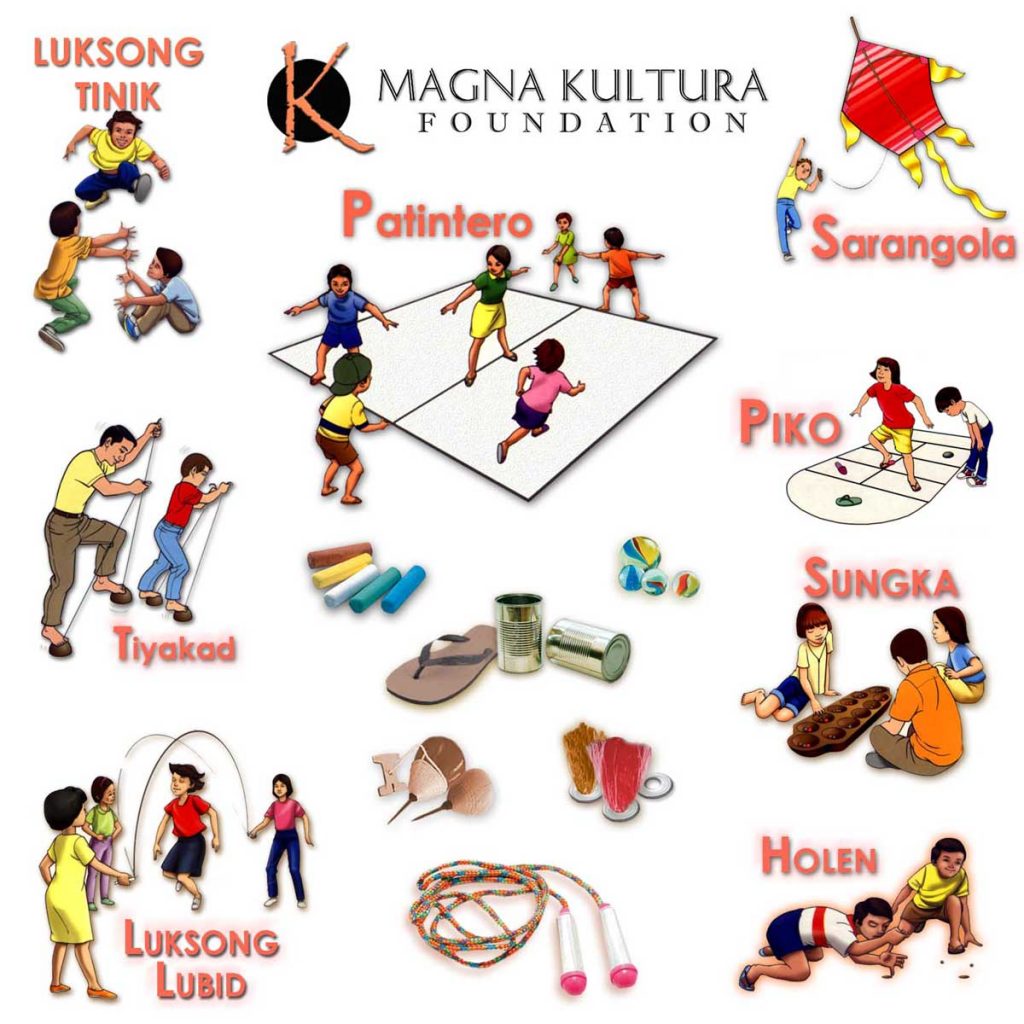How can you say that a Filipino inhabits a home? We’ll explore the 40+ common things found in a Filipino house – from tabo (water dippers) to Sto. Niño altars. So clear off your banig and let’s delve into what makes Filipino homes unique.
Have you ever stepped inside a Filipino house and been astounded by the amount of things they have? From colorful statues to pottery, there’s something new to discover everywhere you look – in every nook. While some items may be unfamiliar to a non-Filipino onlooker, many of these objects are intimately linked with local culture.
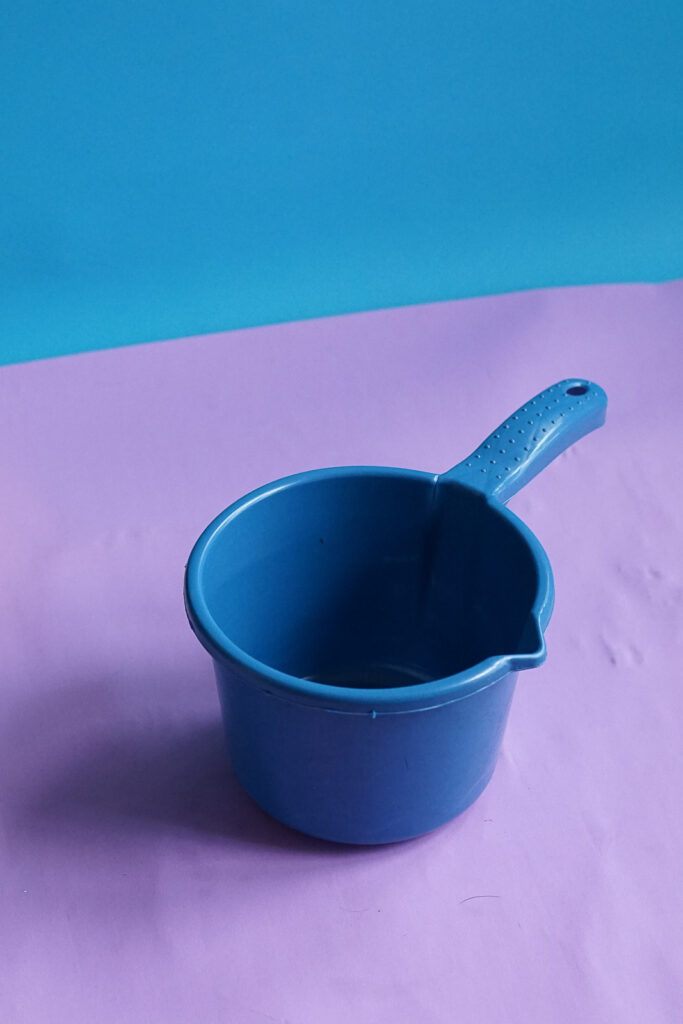
Tabo (Tagalog) or Kabo (Bisaya, Hiligaynon, etc.)
Move over, bidet! In Filipino households, the tabo is an essential item that has become a symbol of the culture. In English, tabo is translated as dipper or pitcher. It’s a simple tool for taking a bath but also a versatile and multi-purpose tool used in other household chores.
The tabo is widely used as a laundry tool, watering plants, and even as an emergency bucket during power outages. It is practical and serves an additional purpose as a measuring unit for one liter. It has become so integral in Filipino households that it is difficult to imagine a household without it.
This simple but indispensable tool has equivalents in Southeast Asian countries such as Indonesia, Brunei, Malaysia, and East Timor. Known as gayung and cebok (they say it as chabo’, very similar to tabo) in these countries, these tools are steeped in tradition and culture.
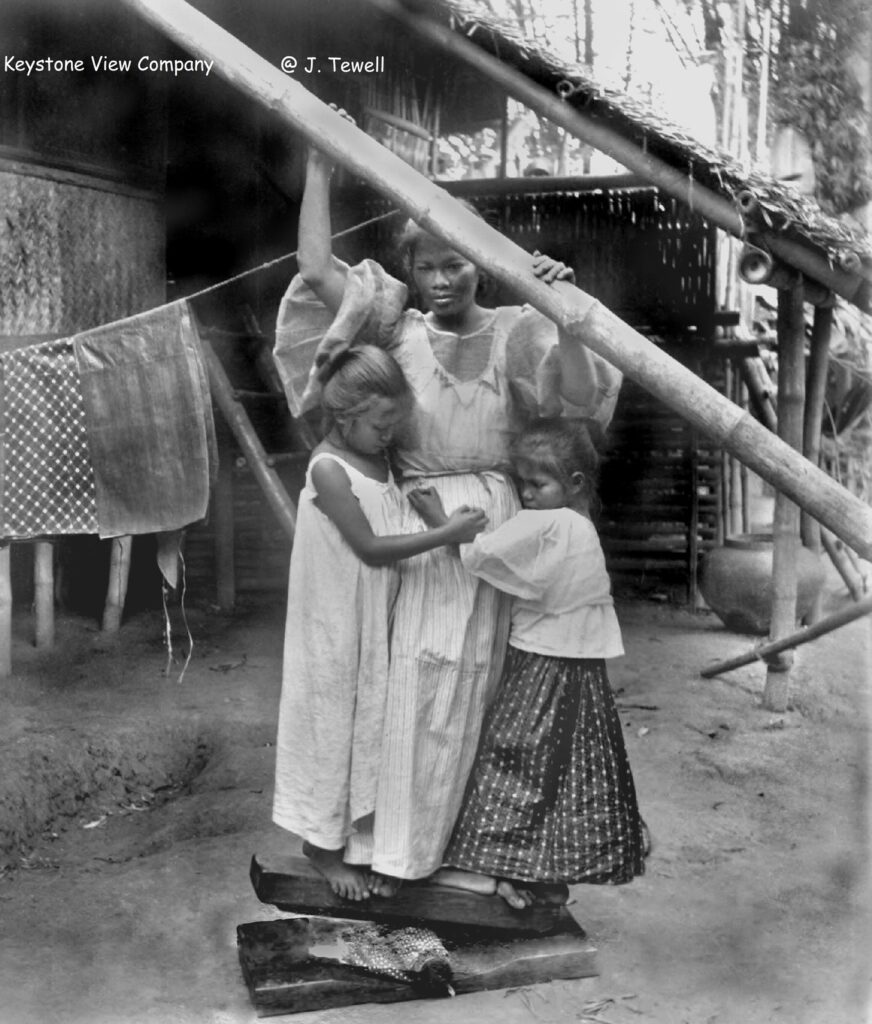
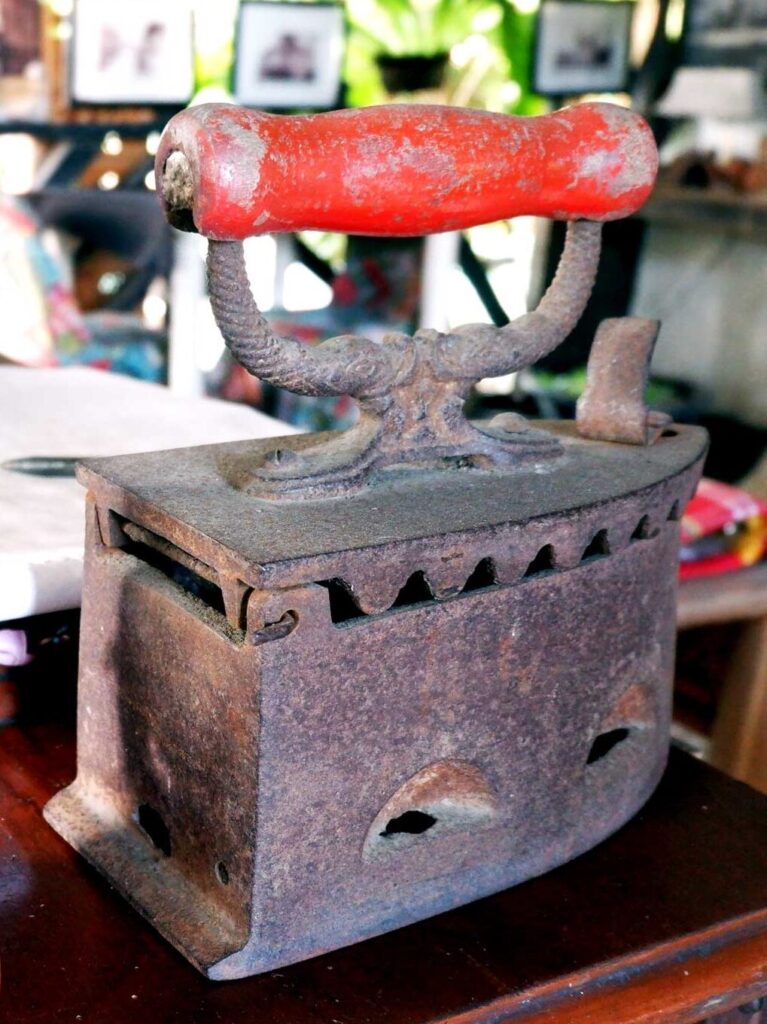
Charcoal iron or Prensa de Paa (Foot Press) or Prensa de Corona (Crown Press)
Before the advent of modern-day pressing machines, Filipinos used traditional methods to iron their clothes. One of these methods was using charcoal iron or “plancha” in Spanish. This European contraption made its way to the Philippines in the early 1900s and became a household staple for decades. There were different types of charcoal iron.
The Prensa de Paa or foot press involves using an iron block with a piece of cloth operated with foot pressure. The early Filipinos kept their clothes crispy by adding starch, or “almirol,” to water.
On the other hand, the Prensa de Corona is a press named after its lid, which resembled a crown.
Some families still see the prensa as an indispensable “decor,” now that become a sought-after antique in grandiose homes.
These items may not be seen in many modern homes, but they remind us how our ancestors kept their clothes wrinkle-free.
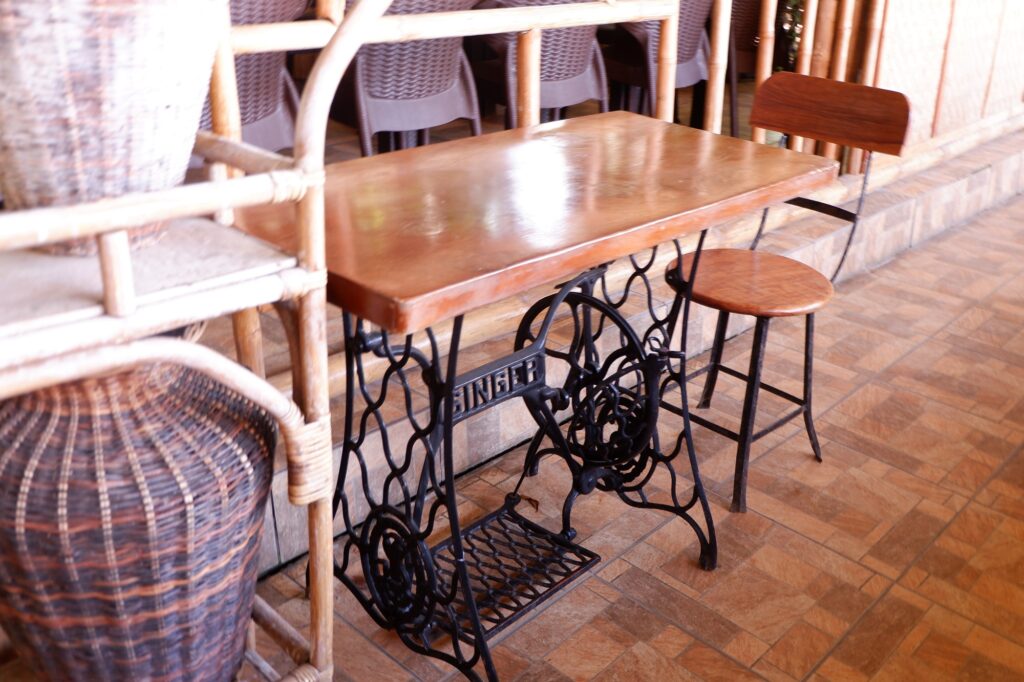
Treadle Sewing Machine or the Singer Sewing Machine (brand)
A common sight in many Filipino households is the treadle sewing machine. While it may seem old-fashioned to some, these machines have stood the test of time and remain a practical choice for many households. A treadle sewing machine can be upcycled into a side table or desk for people to sit on. However, seldom can you see a treadle machine used by most modiste.
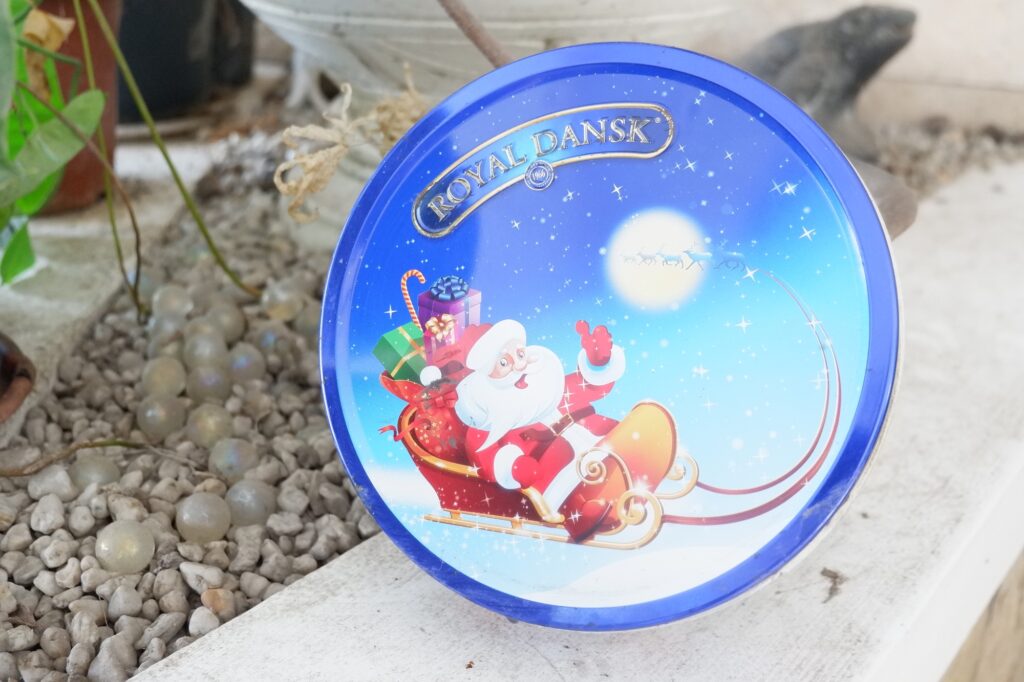
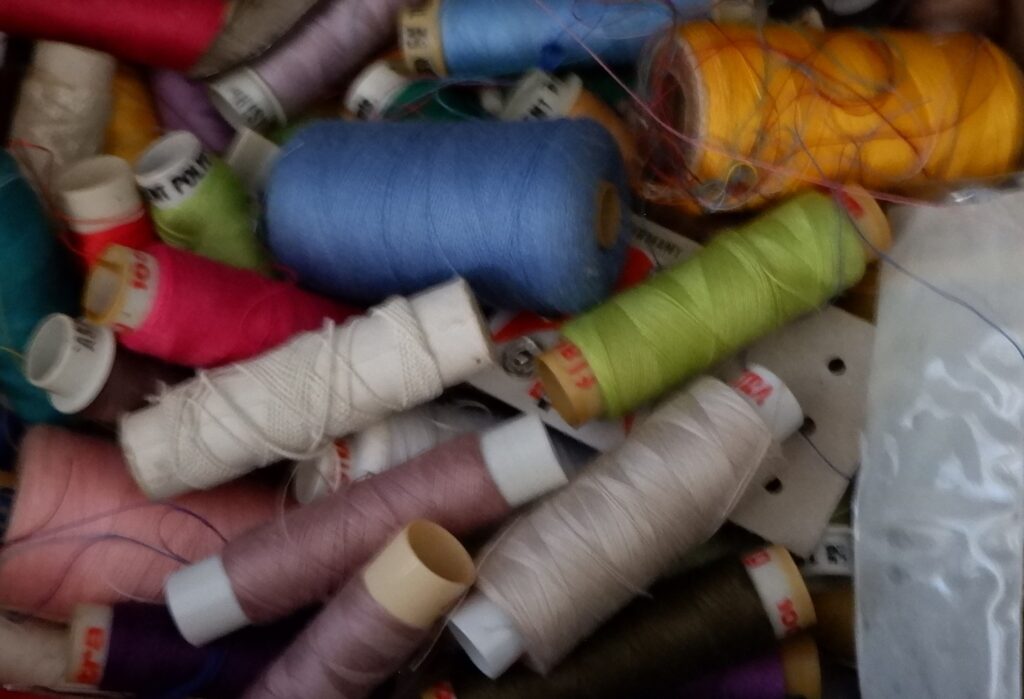
Danish cookie tin full of sewing kits
One of the things found in a Filipino house is these Danish cookie tin cans. Traitors. These cookie tin cans are mostly used as a container for sewing kits, such as needles, thread, and buttons. We often obtained cookie tin cans during Christmas when stores give them away as gifts. But, when all the treats are gone, mom or grandma will fill them with sewing kits.
I guess this is not only a Filipino thing because it’s practiced worldwide.
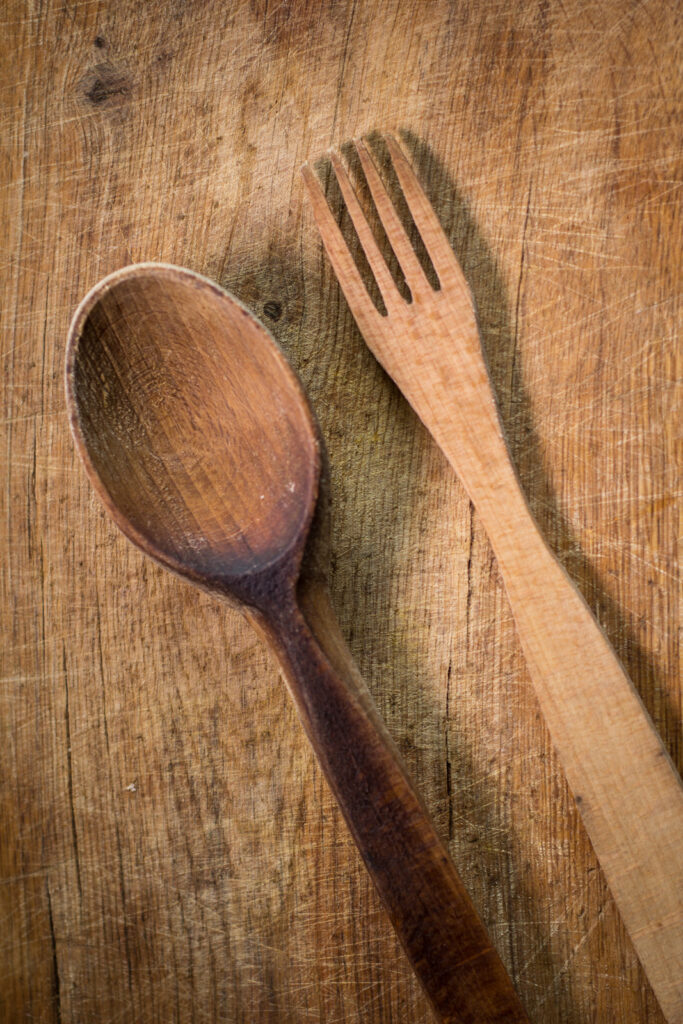
Wooden spoon and fork
In many Filipino households, it’s not uncommon to find a wooden spoon and fork hanging on the wall. When I asked some old people about this tradition, they shared that it represents more than just a simple kitchen utensil. Rather, it’s a symbol of good luck and health for the body.
Another belief is that having these items on display will attract the blessings of having food on the table regularly. The wooden spoon and fork signify the importance of family dining and sharing a meal. So, watch for these meaningful items among the other things in a typical Filipino house.
In other countries, such as Wales, these spoons and forks resemble love. In Ancient Egypt, it was thrown with the deceased because it was still thought to be useful in the afterlife.

The Last Supper painting by the dining area
We are a predominantly Catholic nation. Among the things found in a Filipino house, a framed painting of the Last Supper is a common sight. The depiction of Jesus Christ and his disciples during their last meal before his crucifixion is familiar to many, but why is it specifically hung in the dining room?
For Filipinos, displaying the Last Supper serves as a reminder of the importance of family meals and unity. It is a symbolic message of Filipinos’ values – togetherness, respect for elders, and the significance of sharing meals with loved ones. Ultimately, the painting of the Last Supper is not just a decoration but a beautiful ode to the Filipino culture that emphasizes the centrality of family, faith, and tradition.
In other religions, many portraits of church leaders have been hung up also.
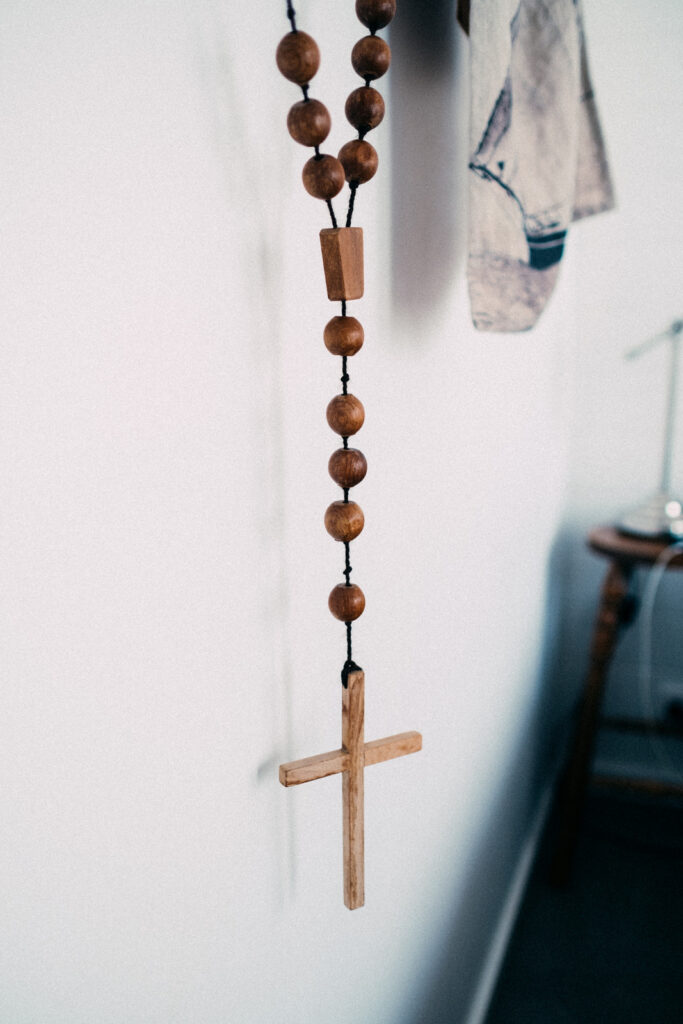
Rosary hanging on the wall
Aside from the Last Supper painting, the Rosary is another essential item in Filipino households. It is seen as a symbol of the family’s faith and is often used as protection and guidance. t is just one of the many things found in a Filipino house that reflects their strong religious beliefs and rich cultural heritage.
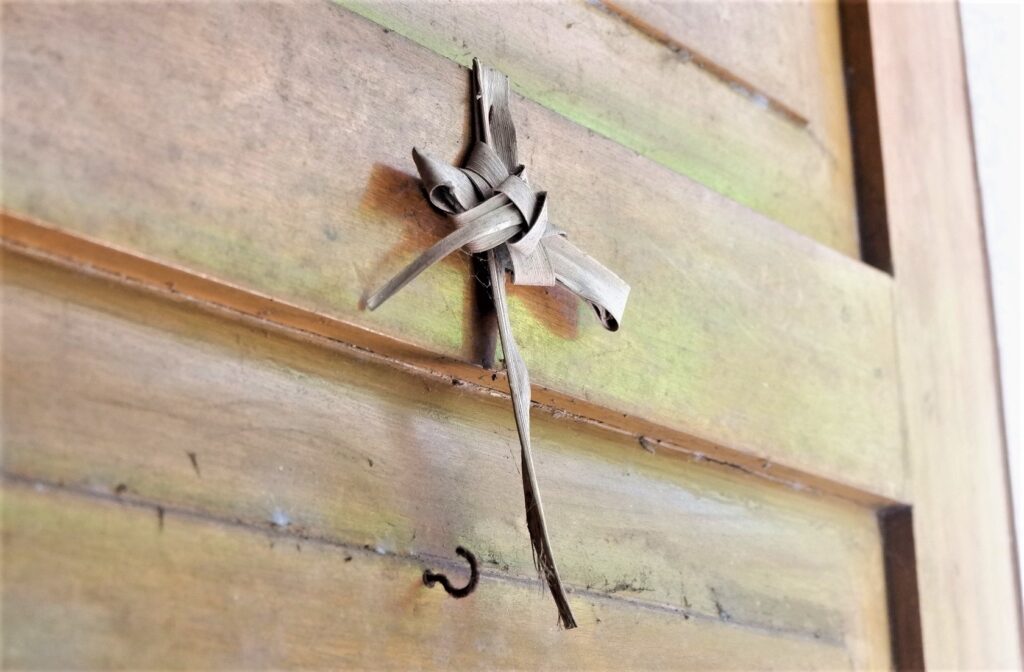
Palaspas
In the Philippines, Palm Sunday is celebrated with great solemnity and devotion by Christians. One of the customary practices during this occasion is the display of palaspas or dried palm leaves in Filipino households. The palaspas remind Jesus Christ’s triumphant entry into Jerusalem, where people waved palm branches to welcome him.
Collecting and displaying palaspas in homes is a way for families to commemorate the sacred event. It is also common to see other religious items, such as images of the Santo Niño and crucifixes, among other things found in a Filipino house.
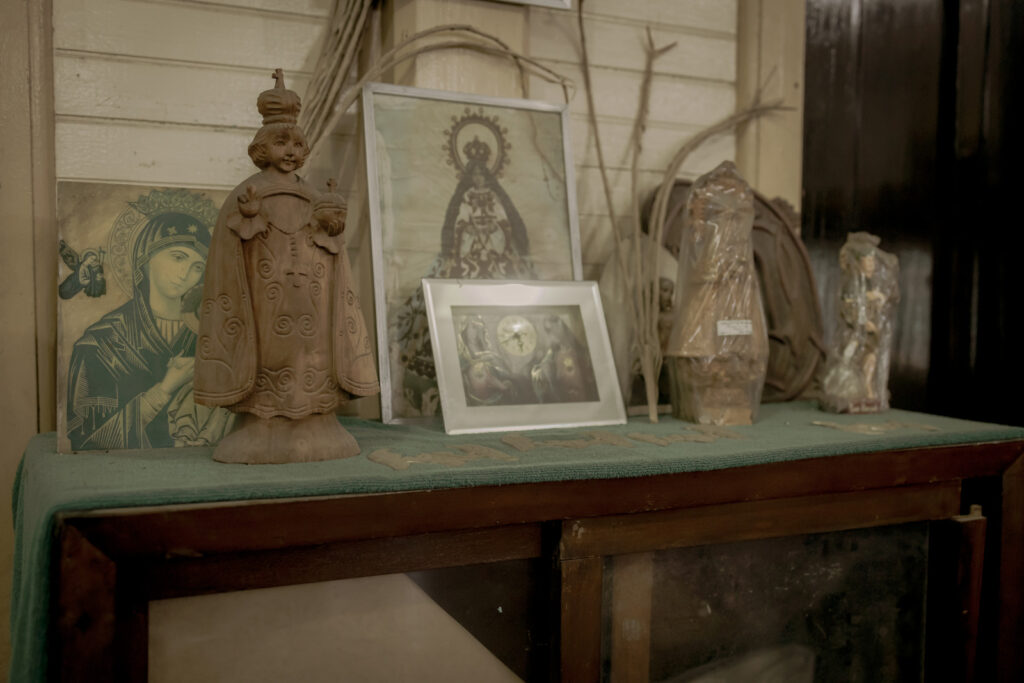
An altar with Sto. Niño
In every Filipino home, one can see a small altar with the image of Sto. Niño. But why is this so? For Filipinos, the Sto. Niño is not just a religious icon but a symbol of hope and protection. It is believed that having an altar with the Sto. Niño can bring blessings and good fortune to the household.
In Iloilo, we have the Dinagyang Festival, and churchgoers often swamp stalls and churches to buy and have their Sto. Niño blessed.
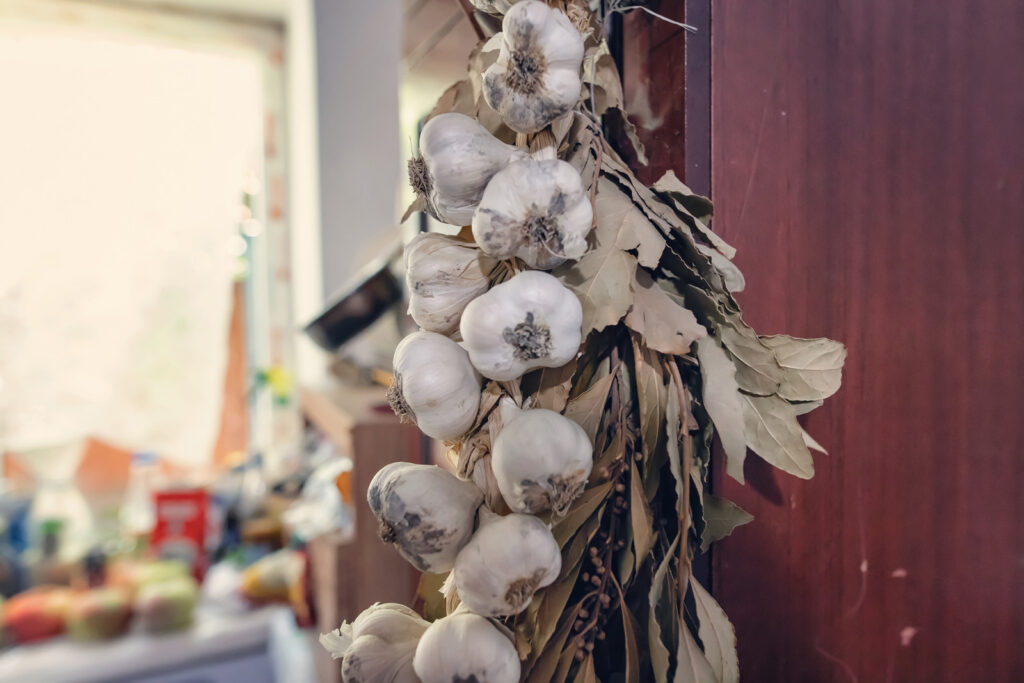
Bundle of garlic to keep away the aswangs
The belief is that the strong odor of garlic can ward off the aswangs, thereby protecting the household. Hence, it is not uncommon for Filipinos to have a bundle of garlic lying around in their homes.
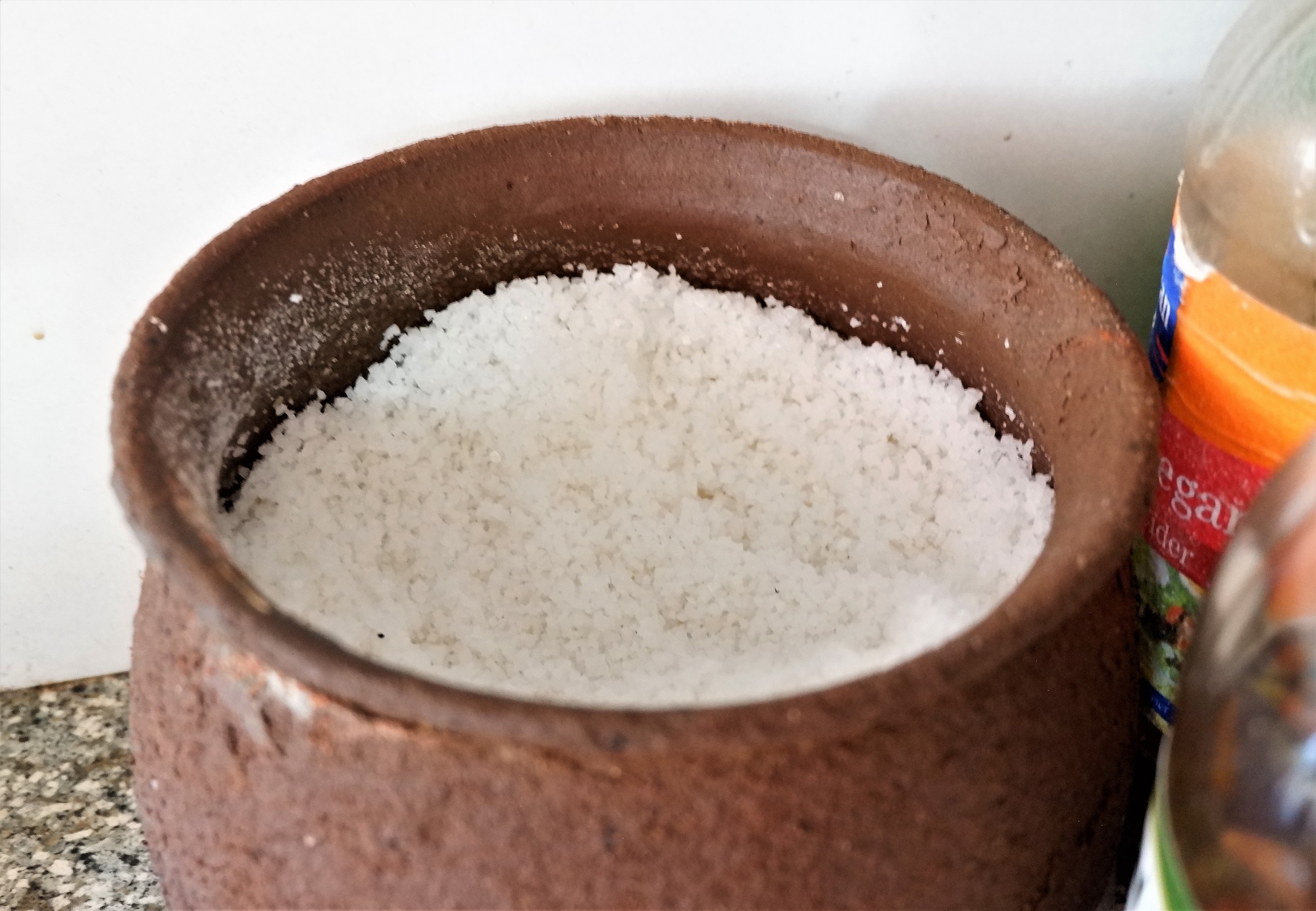
Pot of salt / Asin sa Palayok
When it comes to things found in a Filipino house, nothing beats the humble Palayok. These versatile earthenware pots are used for cooking and serve as storage for one of the most important ingredients in Filipino cuisine- salt.
A pot of salt or “Asin sa Palayok” is a staple in every Filipino household’s kitchen. Not only does it keep the salt fresh and enhance its flavor, but it also adds a touch of nostalgia to every meal.
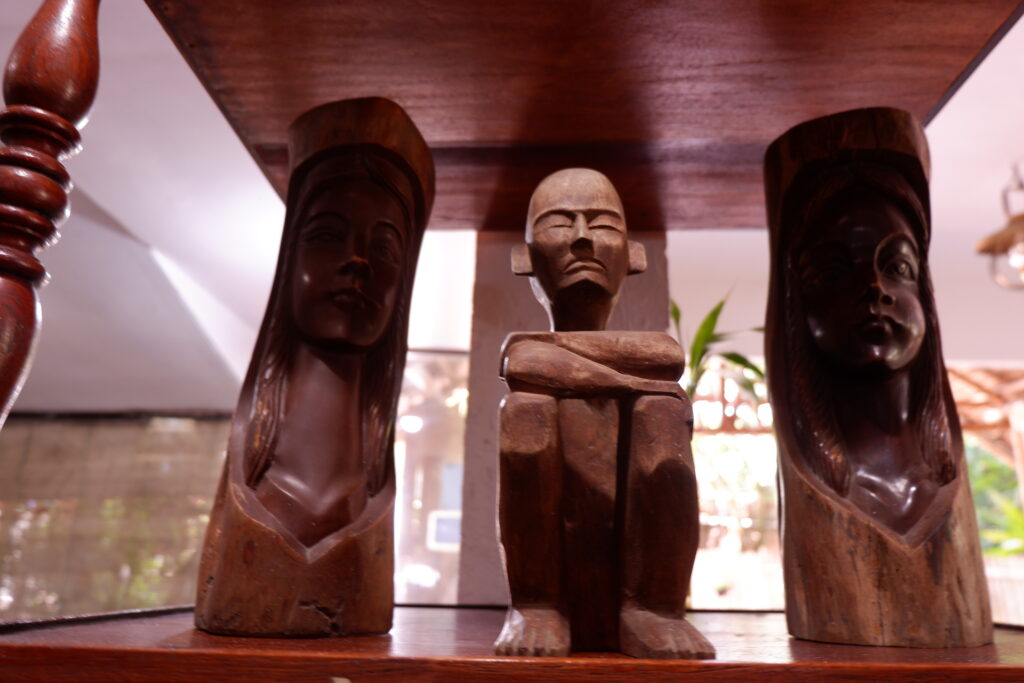
Bulol
The Bulol statue is a carved wooden figure traditionally used by the Ifugao people of Northern Luzon to guard their harvested rice. These statues are known for their intricate and detailed carvings, depicting a male with exaggerated features such as a large nose or bulging eyes.
In addition to their practical purpose of protecting crops, Bulol statues are also considered to have spiritual significance and are often used in traditional Ifugao ceremonies.

Sungka
One of the most beloved pastimes (in early years) in the Philippines is Sungka. This game is typically enjoyed in Filipino homes, and is played using a traditional wooden board or other materials. The objective is to collect more stones or “sigay” than your opponent by strategically moving them around the board.
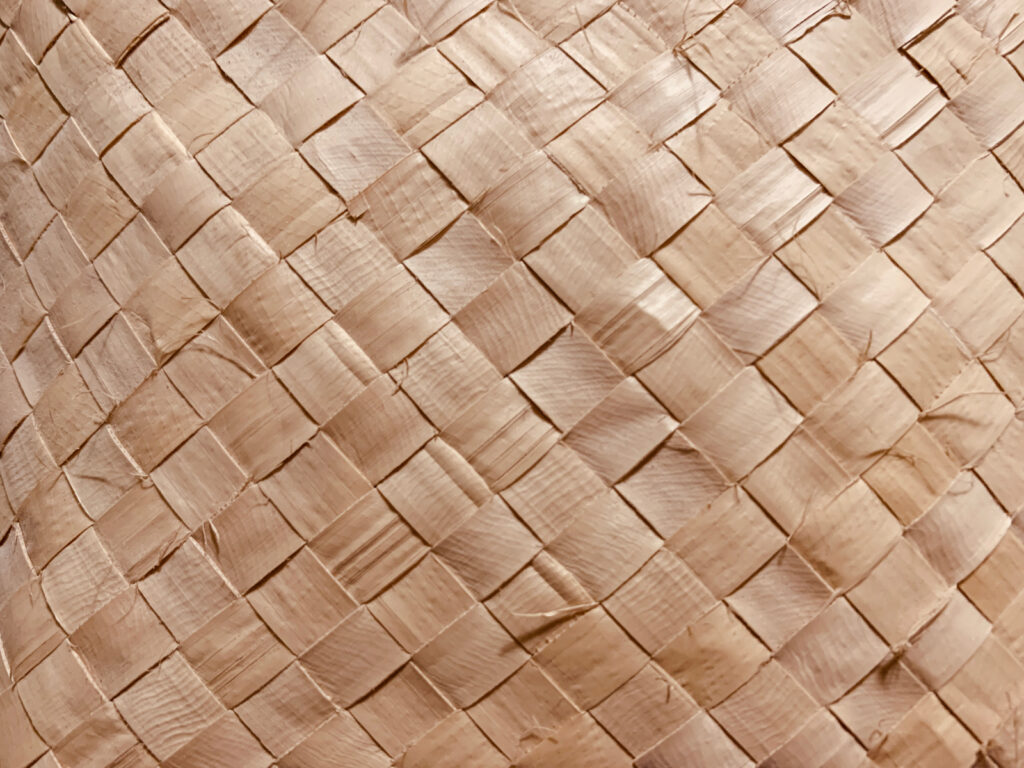
Banig
When it comes to traditional Filipino homes, one can’t help but notice the presence of banigs. These handwoven mats have been a staple in Filipino households for centuries, serving as a sleeping mats made from buri leaves or pandan. While modern innovations have introduced more modern sleeping arrangements, the banig remains quite common in the Philippines today.

Mosquito nets or kulambo
A kulambo may seem like a relic from the past. Still, this humble item can actually save lives by preventing the spread of mosquito-borne diseases such as malaria and dengue fever. Filipinos sleep under the kulambo, not only can they have a peaceful and uninterrupted night’s rest, but they can also protect themselves and their family from potentially life-threatening illnesses.

Chinese ceramics / Chinaware
There had, has, and always been, a relationship between China and the Philippines. During ancient times, we bartered with them for goods. In a Filipino house, one can often find a display cabinet adorned with beautiful chinaware, passed down through generations as cherished family heirlooms.
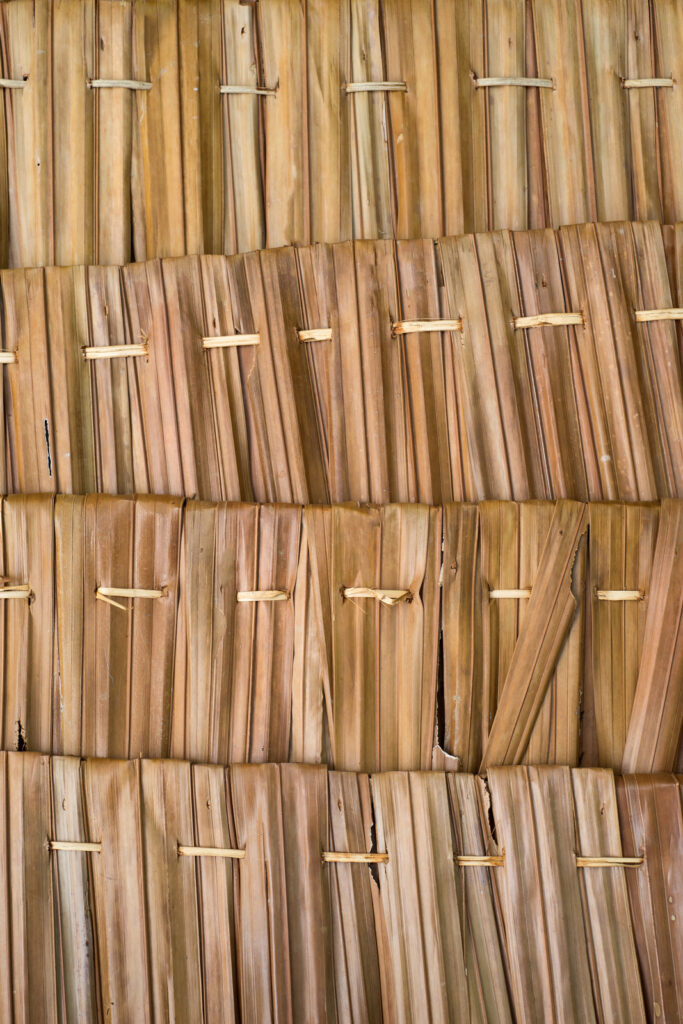
Nipa hut roof / Filipino thatched roof
The nipa hut, also known as a bahay kubo, is a traditional Filipino house often found in rural areas. One of its most distinctive features is its roof, made of nipa leaves, a type of palm native to the Philippines. The use of indigenous materials in construction is a common theme in Filipino architecture, with other common elements including bamboo, coconut wood, and adobe bricks.
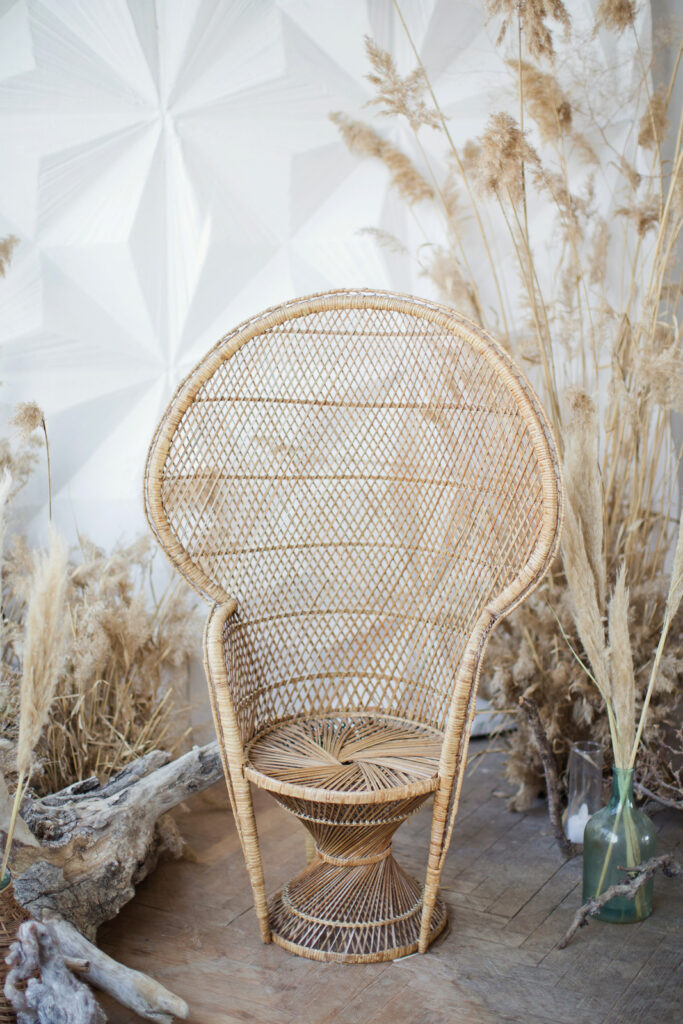
Abaca chairs, bamboo chairs, or Bilibid chairs
One of the things that can be found in almost every Filipino house is indigenous chairs made from abaca or bamboo. Not only do these chairs provide a comfortable resting place, but they also exhibit Filipino craftsmanship and ingenuity. Abaca chairs, for example, are known for their durability and strength, while bamboo chairs are lightweight and perfect for outdoor use.
Meanwhile, Bilibid chairs (rattan and bamboo) became famous for intricate designs and supreme quality WORLDWIDE during the 1920s. They’re called Bilibid chairs because they were made in Bilibid Prison.
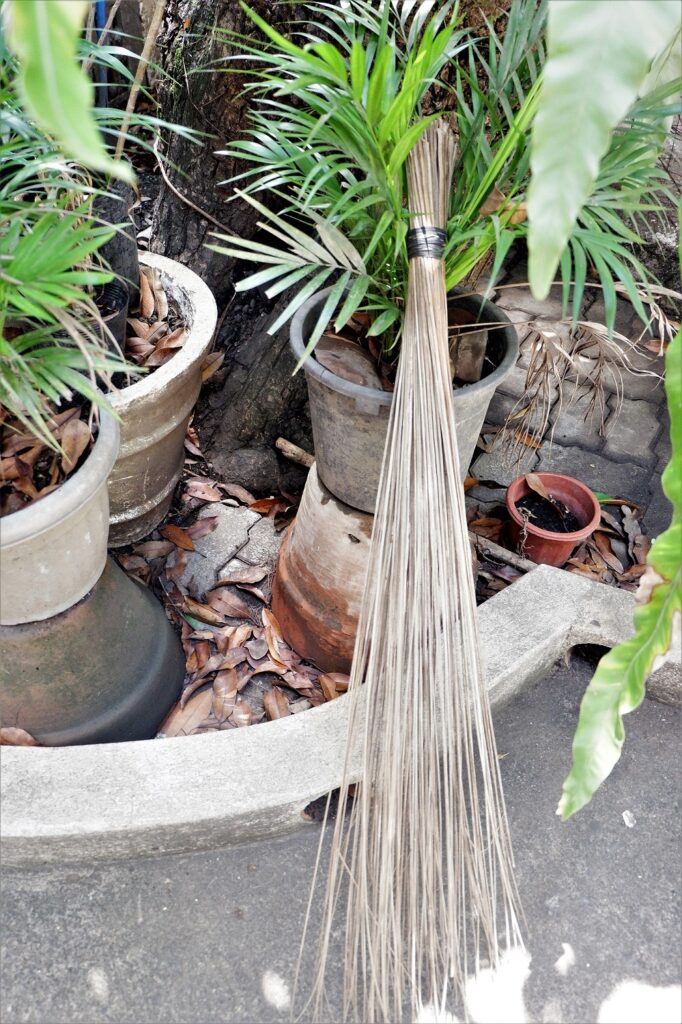
Walis Tambo and Walis Tingting
In every Filipino household, you’re sure to find two important tools: the walis tambo and walis tingting. A household staple, the walis tambo is made from “buyboy” or Tiger grass and is commonly used for sweeping floors. Meanwhile, the walis tingting, made from thin coconut sticks, is primarily used for outdoor spaces, like gardens or uneven terrains.
How else do we clean our homes?
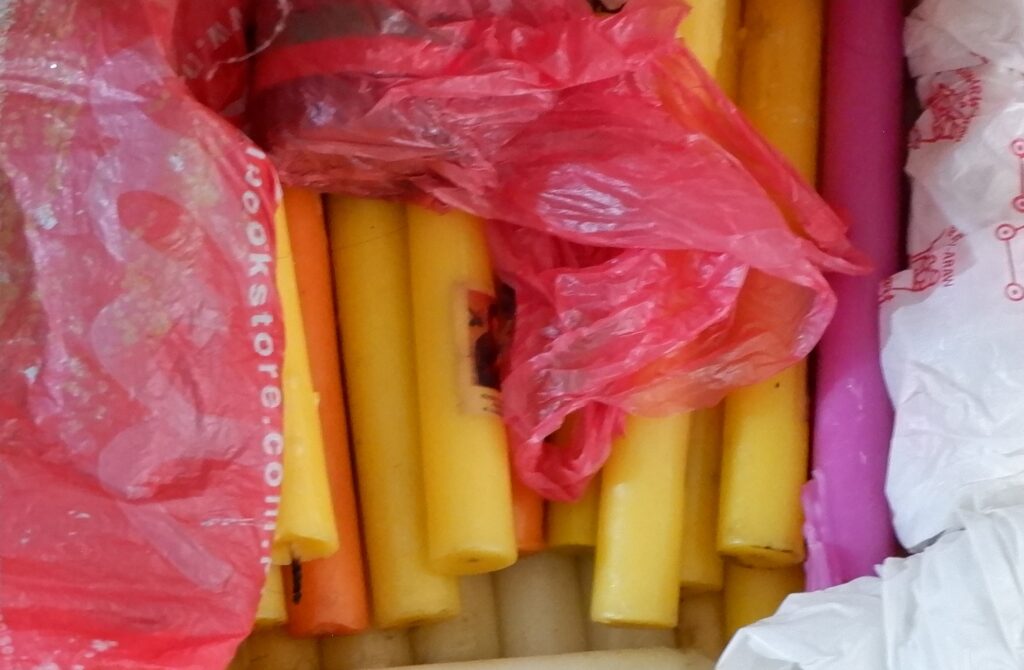
Old candles or procession candles
Old candles or procession candles are common items found in Filipino houses. These candles are special in Filipino culture, often used in religious ceremonies and rituals. Procession candles, in particular, are lit during processions for the Holy Week or during the nightly novenas in the lead-up to Christmas. As for old candles, they may have been used for the same purpose or kept for emergency lighting during power outages.

Framed accomplishments
They represent memories, achievements, and family history. In a Filipino household, framed accomplishments hold a special place in the hearts of many. They serve as a testament to family members’ hard work and dedication and showcase traditional Filipino values and practices.
You can often find them displayed in prominent areas of the house, alongside other important items such as religious icons, woven blankets, and wooden sculptures.

Bentilador
The hot and humid climate of the Philippines made it a necessity for people to have a way to keep cool, especially during the summer months. During this time, the electric fan was introduced and quickly became popular in most homes. Over the years, the electric fan has become a more energy-efficient and stylish appliance while remaining a constant presence in every Filipino household.
Check out our old bentilador during our grandpa and granma’s time!

Suyod comb
This traditional comb is used for removing lice and nits from the hair. The suyod comb has thin, long, pointed bamboo teeth. Its size and shape make it easy to maneuver through the hair and remove lice effectively.
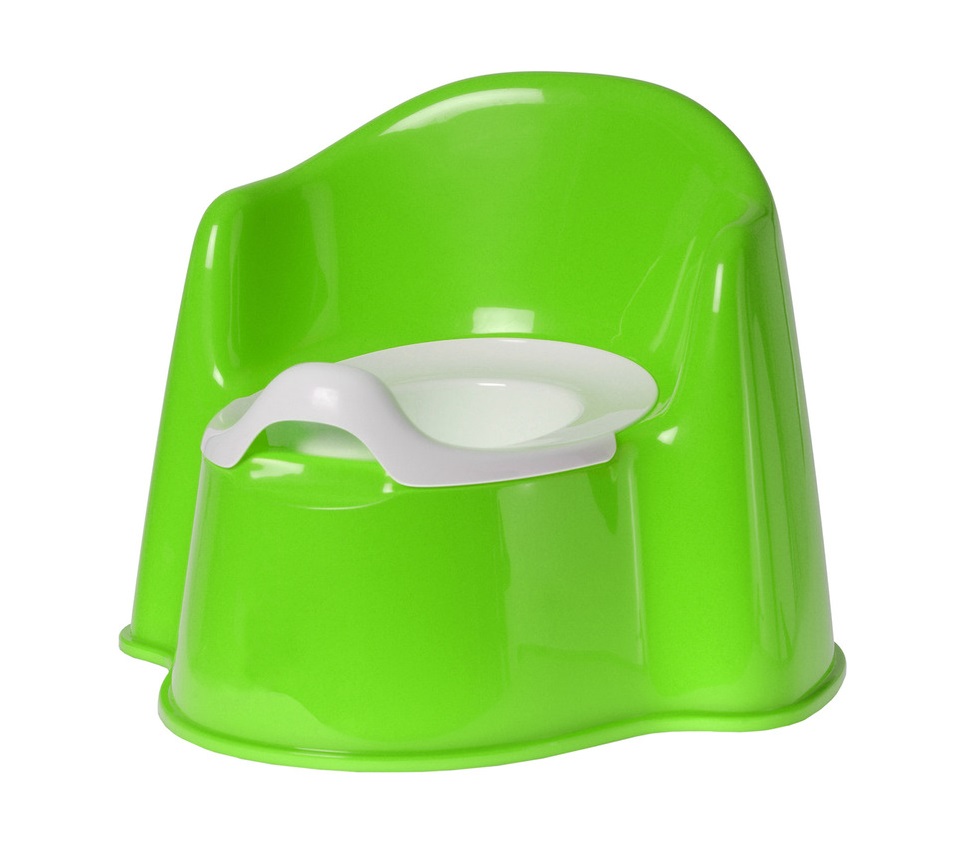
Arinola or the chamber pot
We now have indoor plumbing nowadays, but the-ever presence of an arinola is still there – for they young ones – and the old. It’s perfect for potty training the kids and for those who may have difficulty getting up and down from a toilet seat.
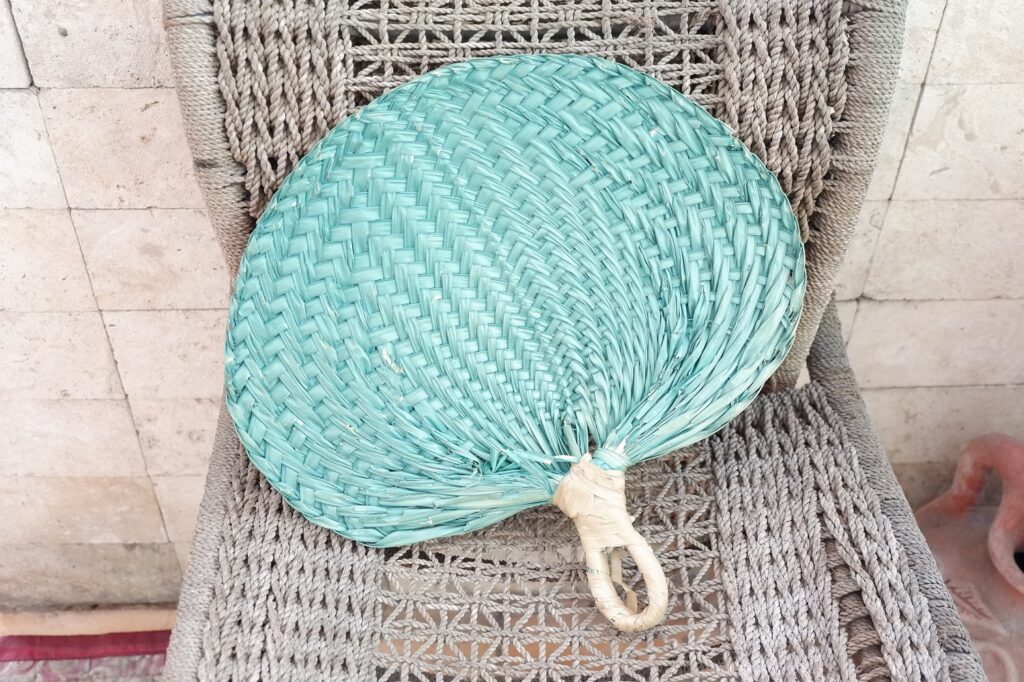
Abaniko, paypay (hiligaynon)
Ang init? Abaniko is a traditional fan made from buri palm. These beautifully woven fans are practical for keeping cool in the hot and humid climate and are particularly a symbol of Filipino heritage and culture. It reflects the creativity and craftsmanship of the Filipino people. There are elegant hand-held abanikos to larger ones that can be used as decorative wall hangings.

Tsinelas
Tsinelas, or flip-flops, are a ubiquitous sight in Filipino households. They are the go-to footwear for casual outings and indoor wear. The humble tsinelas can be found in varying shapes and sizes and boasts designs that range from plain to colorful.
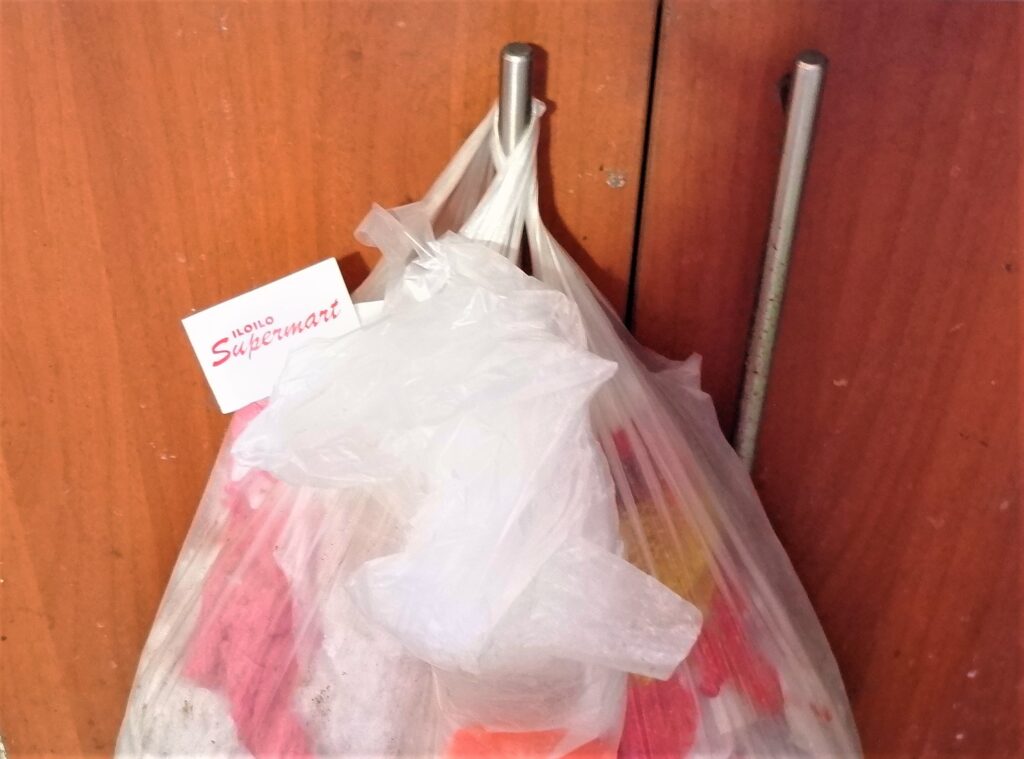
A collection of plastic bag
Oh, you know you’re in a Filipino household when you find a collection of plastic bags piled up in a corner somewhere. We get these bags from the market or grocery store, and for some reason, we just can’t bear to throw them out. So we keep them in yet another plastic bag, and before we know it, we’ve amassed a mountain of them.
You might think it’s crazy, but to us, it’s just normal. If you’re Filipino, you know our houses are never complete without these ubiquitous plastic bags. Who knows, maybe we’re all secretly preparing for some giant shopping spree or famine or something. Or maybe we just really like having extra bags lying around. Who knows. All we know is that plastic bags are just one of the many things you’ll find in a Filipino house.
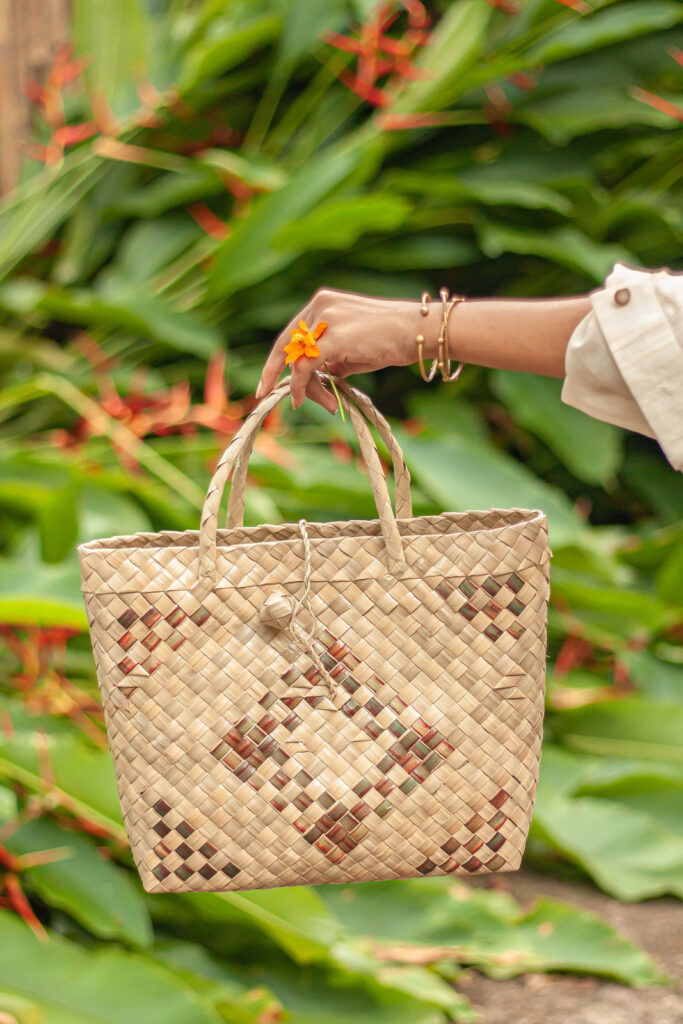
Bayong
A bayong, baby! It’s a bag made of dried leaves traditionally used for shopping. In modern times, this gem of a bag has been elevated to high-style fashion status. The bayong is no longer just for carrying your weekly groceries but also for the runway. Local artists are keen on painting bayong bags for everyday wear. Maybe it’s time to raid your lola’s closet and see what other fashion-forward gems she’s hiding there.
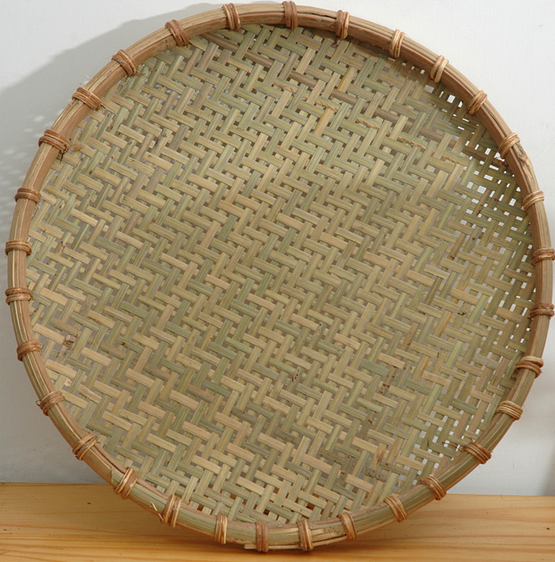
Nigo or bilao
Ah, the trusty old nigo or bilao – a classic Filipino item made with bamboo skin strips, originally used for winnowing rice. Nowadays, it’s been repurposed to hold all sorts of things found in a Filipino house, from kakanin to jewelry to household items. It’s like the MacGyver of household objects – versatile and dependable.
And forget about overpriced jewelry armoires – hang your baubles on a nigo for a rustic yet chic display. Internationally, it’s being sold at around Php15,000! Like, why? It costs us Php30.00 to Php85.00 in central markets.
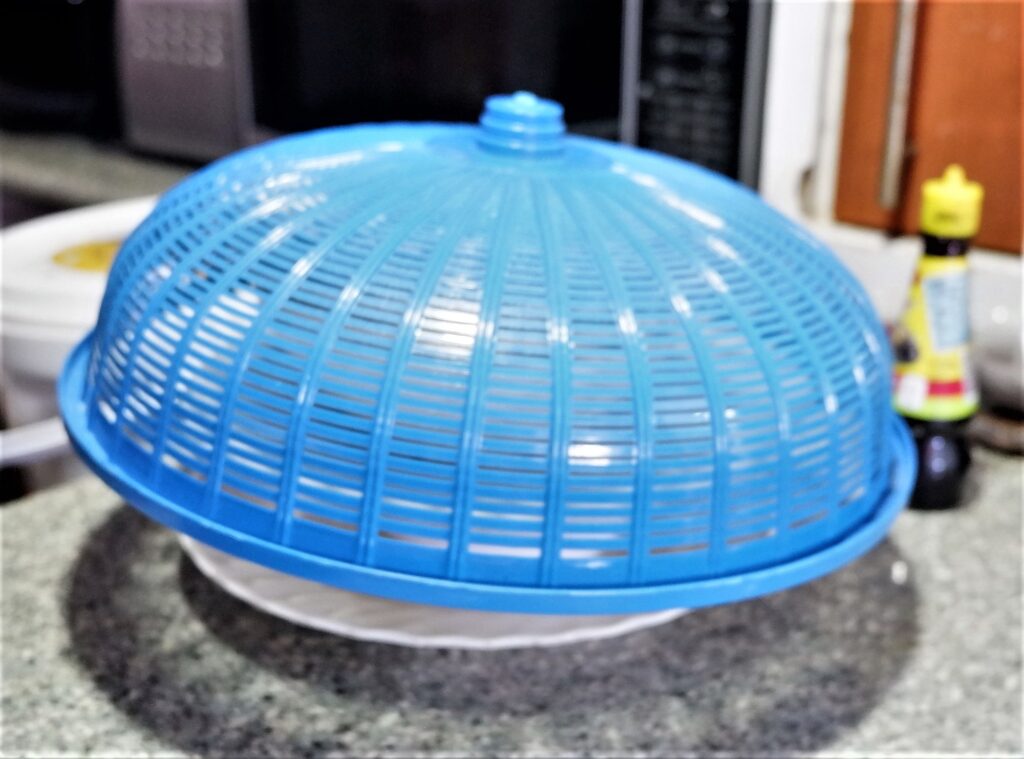
Takip sa ulam
A true work of art, the Filipino plastic table food cover is a masterpiece of both form and function. Not only does it keep your food fresh and safe from any unwanted flies or bugs, but it also adds a certain… je ne sais quoi to any dinner setting.

This blue and red calendar
Let’s be real, what’s a Filipino household without this blue and red calendar? Look at this one – it’s hanging on my bedroom door. But let’s face it. It’s not just any old paper calendar. It’s a staple in the Filipino household.
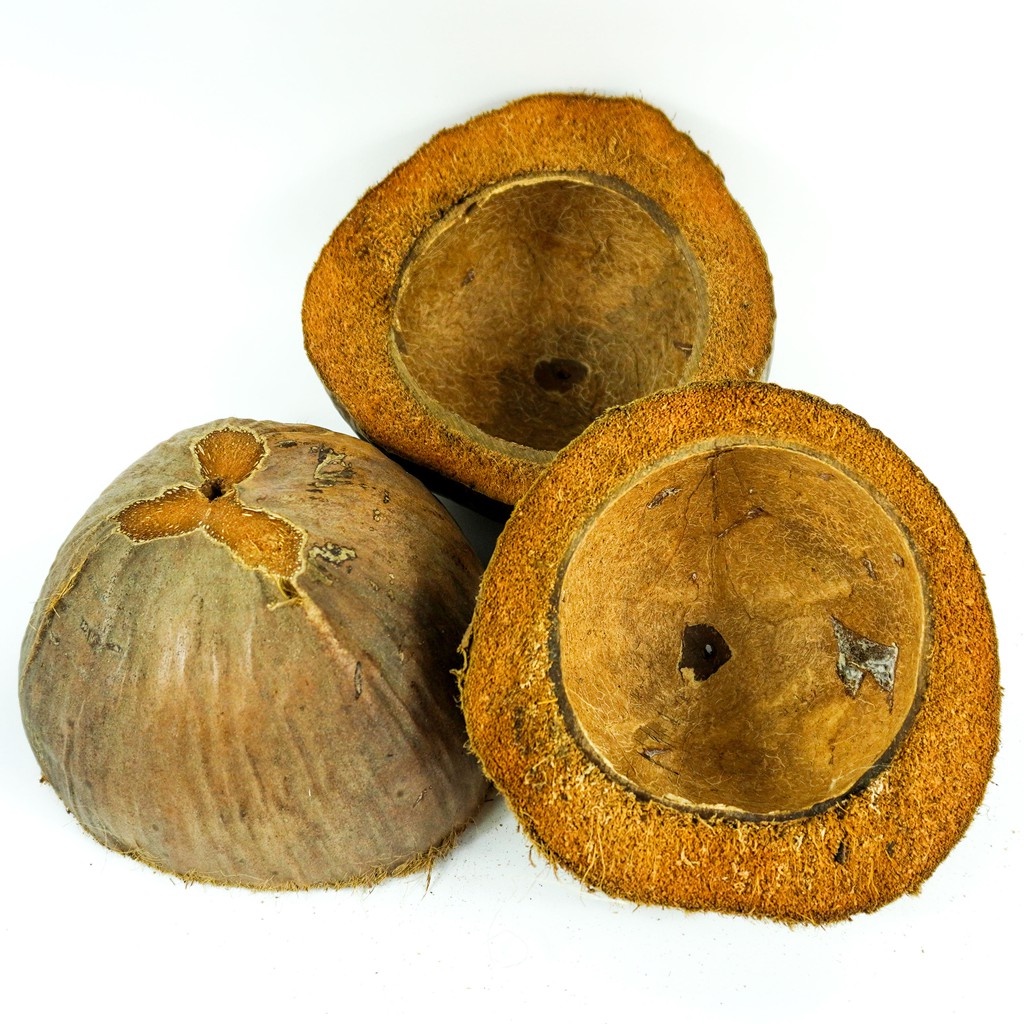
Bunot or coconut husks for floor polishing
And what better way to achieve that perfect polish than with the trusty old bunot? Who else can say they use coconut husks to clean their floors? Remember after school when the teachers asked us to wax the floor and use bunot to polish it? Yep.
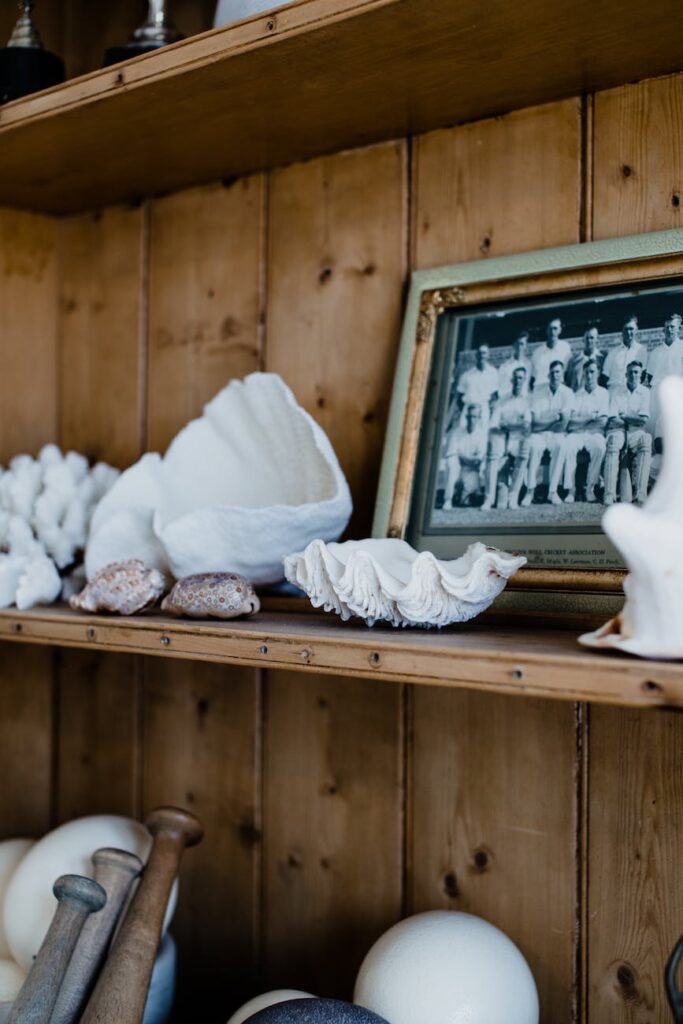
Old photo albums
Ah, old photo albums. They’re like a time capsule filled with memories and awkward family portraits. But let’s be real. They’re also a goldmine for discovering things you never knew existed. Like that photo of Tita Inday wearing a coconut bra at a luau in High School. Or the picture of your mom in her bell bottoms holding something awkwardly.
And let’s not forget about those old film strips of the family road trip to Aklan, where you can spot a particularly stubborn cow standing in the middle of the road. Yes, old photo albums are a staple in any Filipino household and a source of endless entertainment. Who needs Netflix when you have vintage family photos to look at?

The piano that no one plays
It’s a phenomenon that seems exclusively Asian – the idea that having a piano in the house is a sign of class and sophistication, yet no one in the family knows how to play it. Perhaps it’s just a decorative piece or a subtle nod to the arts, but it remains untouched, silently gathering dust in the living room.
But, for the record, this author knows how to play.
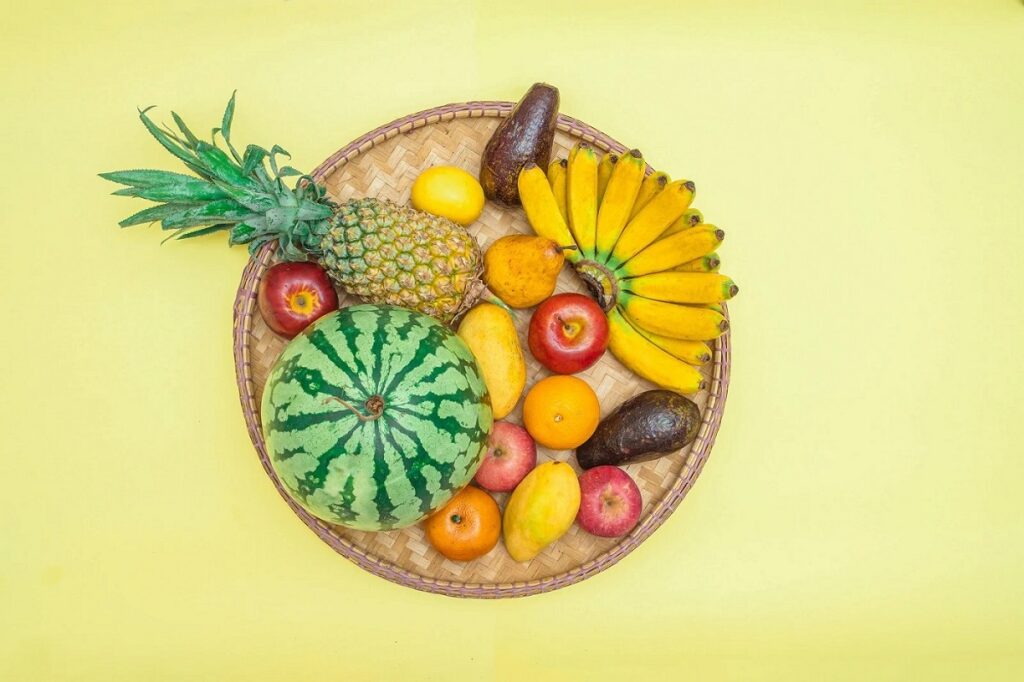
Fruit decorations
You might find a pineapple carved into the shape of a swan or a watermelon that has been expertly sliced into a flower. And don’t even get me started on the skewers. But let’s be real, the true Filipino touch comes from the extras. You know, the little things you’ll find in every Filipino household that seem to make their way into every decoration – plastic flowers, embroidered doilies, and a giant portrait of Jesus.

Baunan (old food containers)
One thing you can always count on finding in a Filipino house is baunan, which are old food containers repurposed for new meals. And let’s be honest, sometimes it’s hard to tell what’s inside. You might think you’re about to indulge in some tasty ice cream, only to find out it’s filled with fish.
If you’re searching the fridge, don’t be alarmed if you come across a baunan filled with last night’s leftovers. It’s all part of the Filipino tradition.

Karaoke
Karaoke is a staple in any Filipino household, right up there with “tambay” sessions. They and Filipino households go together like rice and adobo. It’s practically a requirement to have a karaoke machine in any Filipino household.
You know you’re in a Filipino home when you hear the familiar tune of “My Way” or “Ang Huling El Bimbo” blasting through the speakers.
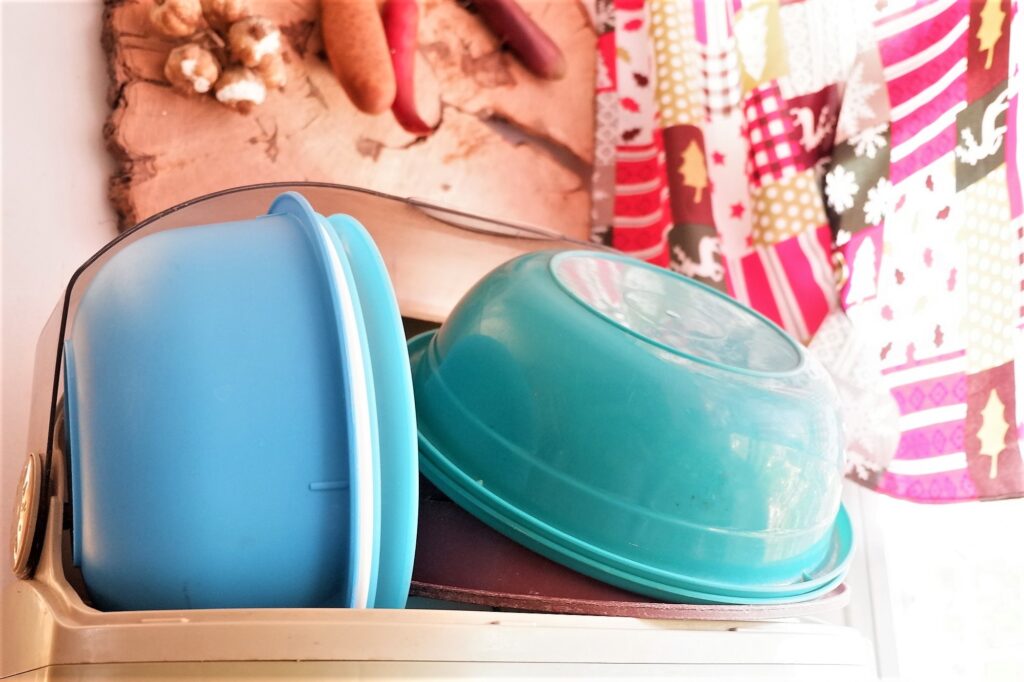
Basin
When it comes to doing laundry in a Filipino household, the basin or washtub is essential. Some may argue it’s among the most useful things found in a Filipino house. Nothing beats a trusty basin for getting those tough stains out of your clothes.
Plus, who needs a washing machine when you can use your arms to scrub away? Make sure you don’t mistake the basin for a place to bathe your pet chicken or store your fish because that’s just asking for trouble.
Palo-palo
And speaking of basin, add in some Palo-palo. Ah, the Palo-palo. The wooden laundry hammer stands proudly among the things found in a Filipino house. Nothing says, “I am serious about getting these stains out,” like taking a good swing with one of these bad boys.
And if you ever need a weapon during a home invasion, let’s just say the Palo-palo packs a mean punch.
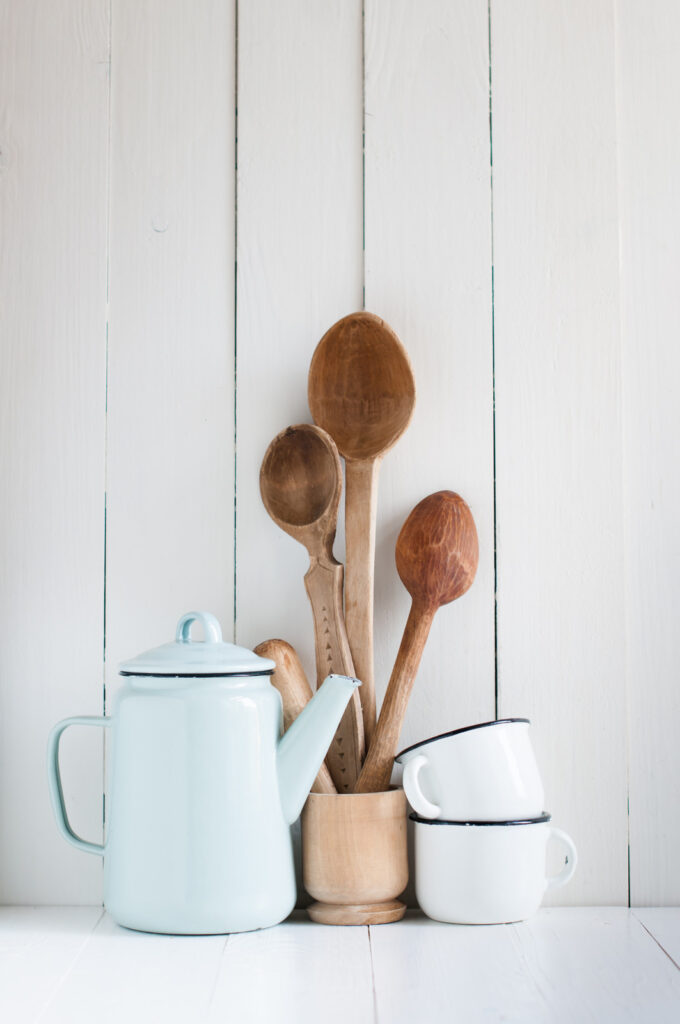
Enamel mug
This humble mug is not just any ordinary kitchenware but an aesthetic collection for Pinoys. From sipping hot coffee in the morning to holding leftovers in the fridge and art deco, the enamel mug has proven to be the go-to container for all things liquid and sturdy.
It’s not surprising to find a collection of these mugs in every Filipino home, along with other ubiquitous items like the infamous Tupperware, the trusty rice cooker, and of course, the ever-present balikbayan box. But let’s face it. Nothing quite compares to the charm and durability of the enamel mug.
Capiz shells
Have you ever walked into a Filipino house and thought, “Wow, there are so many capiz shells here”? If you have, congratulations! You have identified one of the many things in a typical Filipino home. Capiz shells, harvested from the waters of the Philippines, are a staple decoration. They can be found as windowpanes, chandeliers, lampshades, and jewelry.
